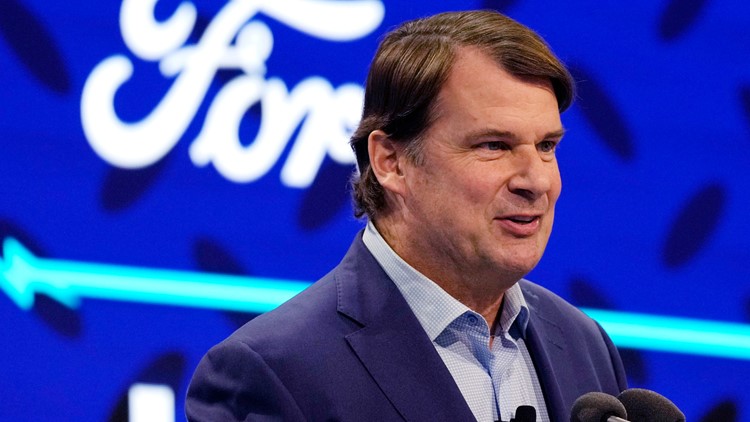DETROIT — Last fall's contentious United Auto Workers' strike changed Ford's relationship with the union to the point where it will “think carefully” about where it builds future vehicles, Ford's top executive said Thursday.
CEO Jim Farley told the Wolfe Research Global Auto Conference in New York that the company always took pride in its relationship with the UAW, having avoided strikes since the 1970s.
But last year, Ford’s highly profitable factory in Louisville, Kentucky, was the first truck plant that the UAW shut down with a strike.
Farley said as the company looks at the transition from internal combustion to electric vehicles, “we have to think carefully about our (manufacturing) footprint."
Ford, Farley said, decided to build all of its highly profitable big pickup trucks in the U.S., and by far has the most union members — 57,000 — of any Detroit automaker. This came at a higher cost than competitors, who went through bankruptcy and built truck plants in Mexico, he said. But Ford thought it was the “right kind of cost,” Farley said.
“Our reliance on the UAW turned out to be we were the first truck plant to be shut down,” Farley told the conference. “Really our relationship has changed. It's been a watershed moment for the company. Does this have business impact? Yes.”
The UAW made strong wage gains after a six-week strike at selected plants run by Ford, General Motors and Jeep maker Stellantis. Top-scale factory workers won 33% raises in a contract that runs through April of 2028, taking their top wage to around $42 per hour.
A message was left Thursday seeking comment from the union.
High manufacturing costs are among the reasons why Ford has a $7 billion annual cost disadvantage to competitors, Farley has said. He told the conference that Ford is making progress on cutting those costs with cultural and structural changes at the company.
It expects to take out $2 billion worth of costs this year, and Farley said he thinks cuts in manufacturing costs will “fully offset” the cost of the UAW contract. Ford has said the contract would add $900 to the cost of a vehicle by the time it reaches full effect.
Ford has shifted its electric vehicle strategy so it concentrates on smaller, lower priced EVs and electric work vehicles such as pickup trucks and full-size vans, Farley said. Any EV larger than a Ford Escape small SUV “better be really functional or a work vehicle.”
A small team within the company is developing the underpinnings of a less costly smaller vehicle, which Farley said would be profitable because of U.S. federal tax credits as high as $7,500 per vehicle.
He gave no time frame for the small EV to come out, but said Ford's next generation of electric vehicles would come in the 2025 through 2027 time frame.
His comments about the union raise questions about whether the new small EV would be built in Mexico, which has lower labor costs. Vehicles built in North America are still eligible for the U.S. tax credit.
►Make it easy to keep up to date with more stories like this. Download the 13 ON YOUR SIDE app now.
Have a news tip? Email news@13onyourside.com, visit our Facebook page or Twitter. Subscribe to our YouTube channel.
Watch 13 ON YOUR SIDE for free on Roku, Amazon Fire TV Stick, Apple TV and on your phone.



